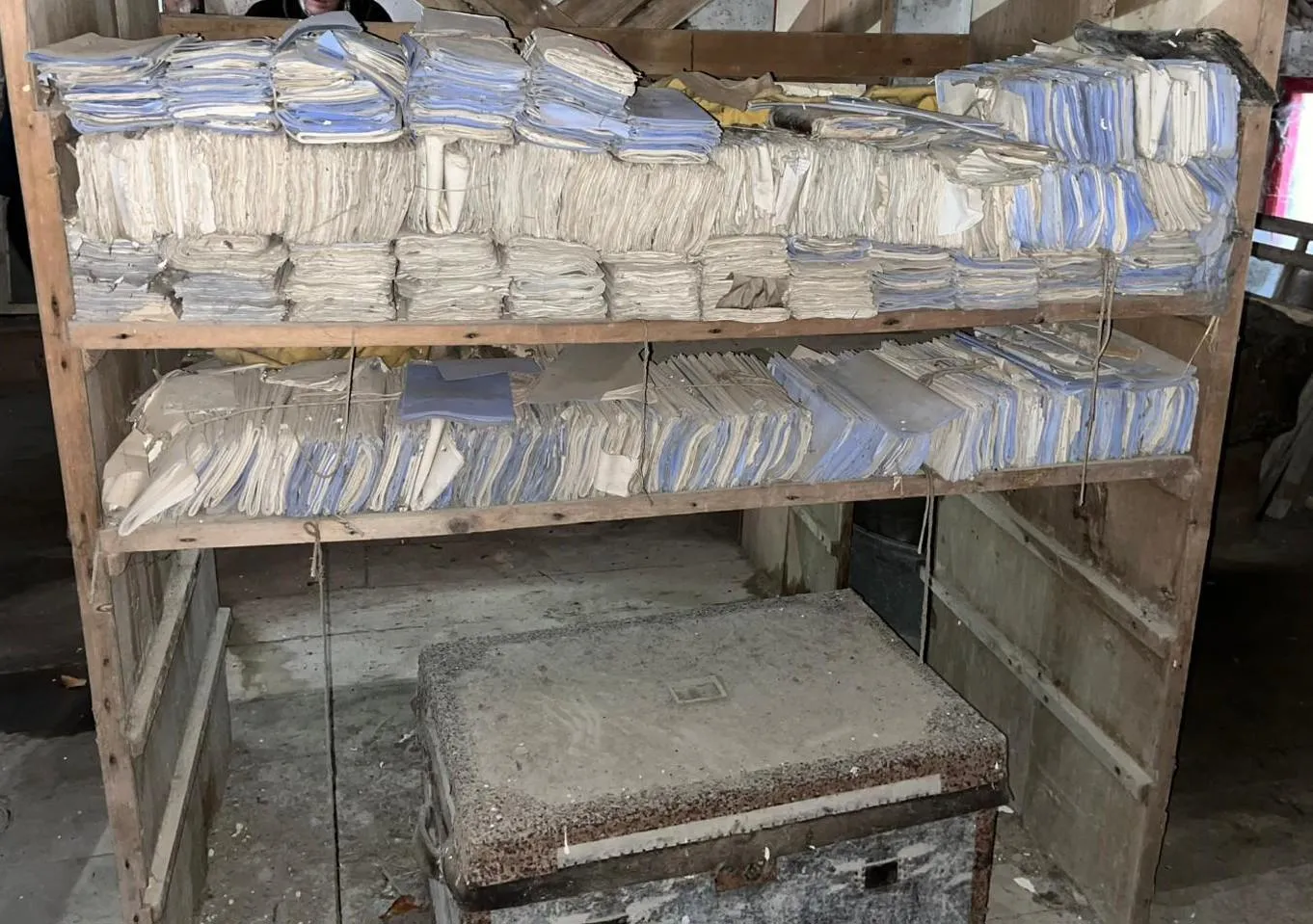
What’s in your barn?
Back in July 2024 Anglesey Archives was approached by Tom Bown to go to his farm, Llwydiarth Esgob, Llanerchymedd and look at some deeds stored in one of the outbuildings. When we arrived, we discovered a huge collection of draft wills and deeds from Mr Bown’s relations the Prichard family, solicitors and farmers based there for over two hundred years. This blog will focus on the 321 wills with 273 items of associated correspondence. I haven’t counted the deeds yet!
Wills are fascinating documents that can assist in family history research. They name individuals and their relation to the testator (the person who made the will), include their address and occupation and what they owned. This can be money, land, property and personal effects. I find the drafts contain additional details not found in the final will. The drafts and associated correspondence show a timeline from the person making the will to their death. They are constantly being updated by the solicitor right up to final notes of the date and time of death of the testator and sometimes where they were buried. Some of the enclosed letters although very serious make me smile. One gentleman asks Mr Prichard “Don’t tell the family about this letter”

Wills - a short history
A ‘Statute of Wills’ in 1540 made it possible for landholders to determine who would inherit their land upon their death. Males over the age of 14 and females over the age of 12 were permitted to make a will. After the 1837 Wills Act the age rose to 21 years, although married woman required their husband’s consent to make a will. Any property a woman held at the time of marriage was transferred to her husband’s estate. This law remained in place until the Married Women’s Property Act of 1882 and it wasn’t until 1893 that married women gained complete control of their property.
Wills - the technical stuff
Wills can be found on parchment or paper, depending on whether they are originals or copies. This collection of drafts is all on paper.
- A 'Last Will and Testament' was made by a 'testator' (male) or 'testatrix' (female).
- Property, real estate, or land, was 'devised'.
- 'Goods and chattels', or personal possessions, were 'bequeathed'.
This reflects an old medieval distinction:
- Wills dealt with property and land.
- Testaments dealt with personal effects.


Certain conditions had to be met for the will to be legal including:
- It had to be in writing
- Name at least one 'executor' or 'executrix' responsible for carrying out the wishes of the will.
- Be signed and sealed by the testator.
- Be signed by three witnesses to the signing.
- Be the last will made by the testator before he died, unless there was evidence of tampering or coercion. Testators who changed their mind about the provisions in their will could either draw up an entirely new one, or add a 'codicil', which had to be dated and witnessed.
All wills had to be proved by a legal authority, a process known as ‘probate' from the Latin probatum - proved. Probate was carried out by the church and by certain manorial courts until 1858 when Civil District Probate Registries took over. The Diocese of Bangor wills from 1576 - 1858 include Anglesey and can be found online at:

Our wills - the process
When we retrieved this collection from Llwydiarth Esgob, though in excellent condition for their age, they needed two hundred years of dust and the string that tightly bound them removing. We isolated them to check there was no damp or insects from the farm in the bundles and used small pest traps for monitoring. To clean them we used a mixture of smoke sponges and soft brushes along with our fantastic machine that sucks up the dust and locks it in a filter. We decided to keep the wills in the order of the bundles and created a catalogue of their contents i.e. naming all the people and properties where possible. This has been imported into our database and uploaded to The Archives Hub where you can search to see if any of your family had a will made by the Prichard family solicitors:




Individuals
It is interesting to see a will for John Owen, of Llanerchymedd, gentleman's servant. We have many examples of the gentry leaving bequests to their servants but only one other example in our collection of a servant leaving a bequest, that of Sarah Price, spinster whose master and mistress were members of the Massey family. The wills can reveal just how wealthy some individuals were. In 1833 Frances Sparrow of Beaumaris wrote to John Jones her solicitor stating that she ‘has a £1000 at her disposal’ and details who she wishes to leave it to. This would be around £102,000 in today’s money. Usually in wills we see small household items and furniture being left but in 1834 Robert Williams of the Royal Oak in Beaumaris left his Sloop the Susanna [a sailboat with one mast] to his children. He had a daughter Susan, and it made me think was she named after the boat, or the boat named after her…..




Little extras
The habit of sealing an envelope with wax has almost died out now. The dried seals are very fragile and often don’t survive. We are fortunate to have some lovely examples of whole seals in this set of documents. The associated correspondence also contains some good examples of postage stamps from the time.
Amanda Sweet, Archivist, Anglesey Archives
Glossary of Will terminology | Autistica


